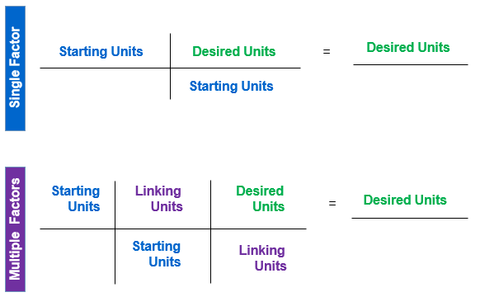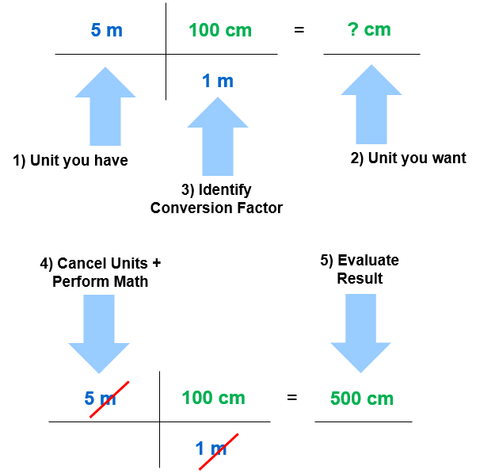Unit Conversion

Unit conversion is a multi-step process that involves multiplication or division by a numerical factor, selection of the correct number of significant digits, and rounding. This multi-step process is presented in NIST SP 1038 - 2006 (Section 4.4), including a rounding procedure for technical documents, specifications, and other applications such packaged goods in the commercial marketplace and temperature. Common conversion factors are also listed (Section 5).
Dimensional analysis is a technique used to convert measurements. For example, changing the magnitude of a SI quantity or converting between SI and non-SI units. Some measurements have one dimension, for example length. A square shape (area) has two dimensions (e.g., length and width), while a cube (volume) has three dimensions (e.g., length, width, and height). Converting between measurement units is a very important skill when working within and between measurement systems.
This problem-solving method is based on the principle that quantities are defined as equalities. A conversion factor is an expression for the relationship between units that is used to change the units of a measured quantity without changing the value. A conversion ratio (or unit factor) always equals one (1), where the numerator and the denominator have the same value expressed in different units.
A numerator represents the parts out of the whole or how much you have. A denominator represents the total number of parts of the whole. In this example of the common fraction ¾, 3 is the numerator and 4 is the denominator. Performing the math calculation (3 divided by 4) transforms the number into a decimal fraction, 0.75.

This method uses the fact that any number or expression can be multiplied by "one" without changing its value. This allows the conversion of units by multiplying the initial measurement by one (or more) forms of the number 1. While the multiplication by 1 does not change the value of the measurement, it does change the measurement units.

Unit Conversion Process
This process uses the fact that any number or expression can be multiplied by "one" without changing its value. This allows the conversion of units by multiplying the initial measurement by one (or more) forms of the number 1. While the multiplication by 1 does not change the value of the measurement, it does change the measurement units.
It’s very easy to systematically apply unit conversion process to solve conversions within or between measurement systems. It may be necessary to multiply by more than one conversion ratio in more complex conversions. Use these steps to construct a unit conversion problem so one (or more) of the units cancel until only the desired unit remains:
Step 1. Identify the unit you have. These are the Starting Units.
Step 2. Identify the unit you want. These are the Desired Units.
Step 3. Identify appropriate unit conversion factor(s). These are the Linking (or Ratio) Unit(s). Use EXACT conversion factors whenever available.
Step 4. Cancel units and perform the math calculations (e.g., multiply, divide). Repeat the calculation (double check).
Step 5. Evaluate the result. Does the answer make sense?
Best Practices
- Multiply the numerators (across) and denominators (across) to calculate an intermediate answer, then divide. Documenting the calculation steps can be especially helpful when problem-solving errors.
- Do not round any quantities used within the calculation.
- Only round the final calculated quantity.
Many unit conversion problems will require only a single unit conversion factor. However, multiple factors may be required to solve a problem. These figures illustrate both examples. Remember that Step 3, identifying the conversion factor, is often the most challenging step. If an incorrect (or approximate) conversion factor is used, a correct solution will not be achieved.

Example. An engineer has designed a new 5 m computer cable but must represent the length in centimeters within an owner manual diagram. How many cm is the length?

EXPLORE THE METRIC PROGRAM
Becoming Familiar with SI | Everyday Estimation | Metrication FAQs | Prefixes | Metric Kitchen | SI Education and Training | SI Publications | Understanding Metric | Writing with Metric Units | National Metric Week | NEST-R (STEM Registry) | NIST Education Resources
Contacts
-
Metric Program

